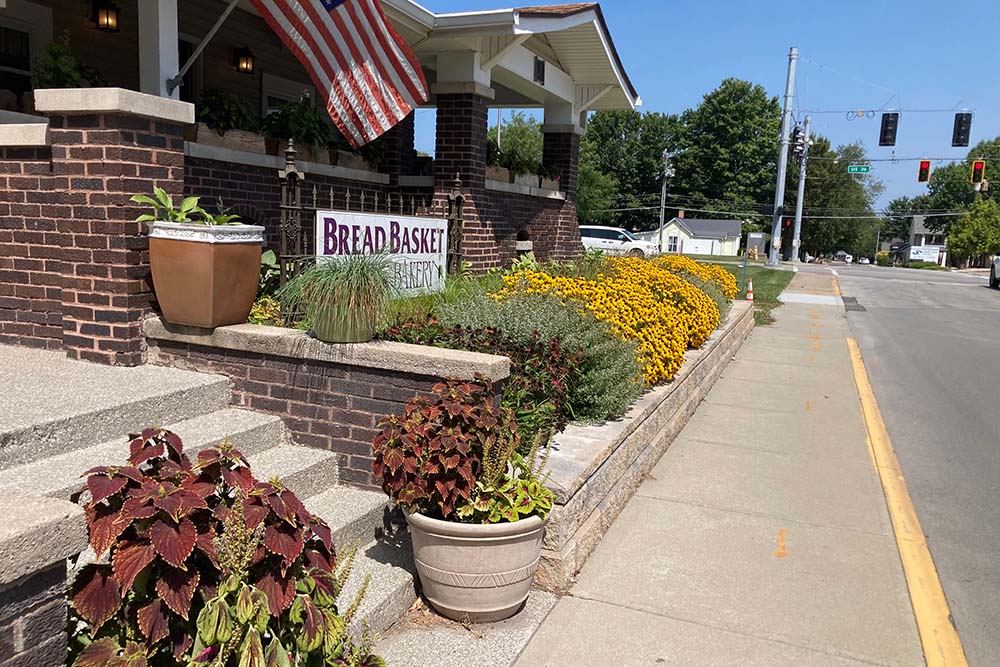Pretty much every landscape design project needs steps to help create a path down to or up from a space. Whether it’s getting from a sunroom to a patio, creating a safe passage down a hill, or accommodating a slope in a front walkway, anytime there is a change in elevation how people will navigate it will need to be considered. Since the majority of our clients are looking to create outdoor spaces that complement the natural beauty of their yards, we tend to use a lot of stone steps in our designs. There are many style choices, and finding the right option depends upon the desired look, budget and space.
Stone Step Style Options in Landscape Design:
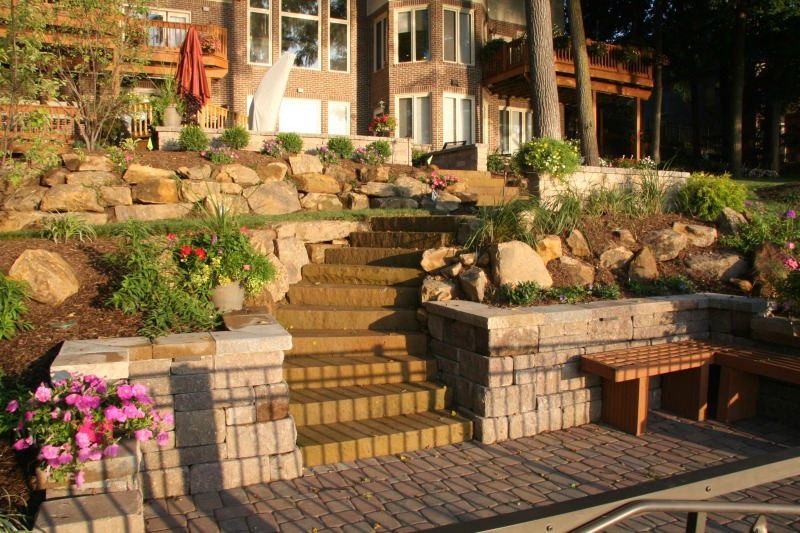
1) Clean-Cut
Blocky and straight-edged, this style is usually made out of sandstone or slate because they softer and lighter than other stone, making them easier to cut and install. These steps are still 300-400 pounds for the 4-ft variety and even heavier for the 6 ft variety, so special equipment is needed for transport and installation. One of the benefits of the Clean-Cut style is that it is easier to install due to the uniform dimensions. Planning is a bit more straight-forward as well. Sandstone comes in reds, yellows and oranges; slate has more bluish-greys or greys. The more refined look of the Clean-Cut style can look great off a sunroom or in a more formal landscape design.
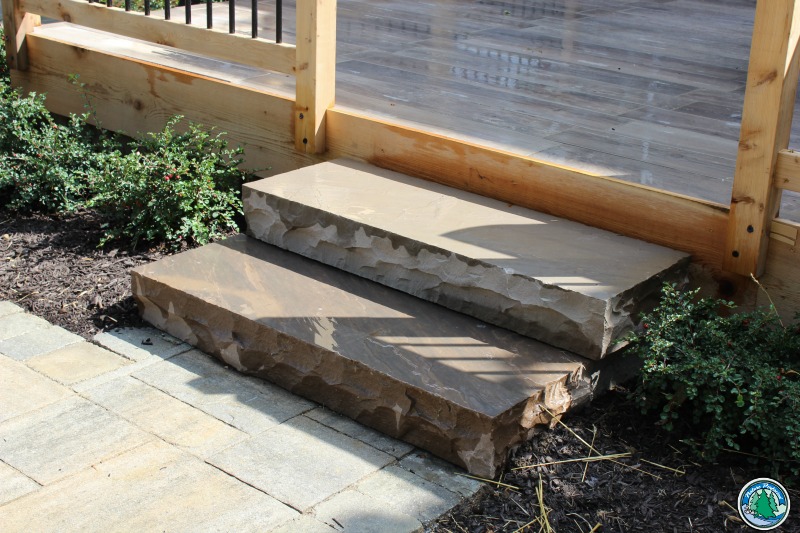
2) Rough-Edge Face or Snapped-Edge
This option has similar benefits to the Clean-Cut variety but offers a more relaxed look. The outer edges are textured, providing a natural aesthetic to the sides of the step. Similar to Clean-Cut, Snapped-Edge makes filling in spaces a bit easier due to its standard dimensions. For example, we recently connected an outdoor area to a set of stairs that went down to a basement. There was a 10ft gap that needed to be filled with stone steps. The standard dimensions of the snapped-edge stone made our task less complicated; we easily cut them to the sizes necessary to complete the space.

3) Irregular
If a natural look is a goal for a landscape design, we like to use irregular stone steps. They are not manufactured in any way – whatever mother nature provides is what we get. Flat boulders of granite are the typical option for our area. Planning and installation are a bit more time-consuming since we are subject to what shows up at the job site. No two natural rocks are the same. Even though our clients can go to the retailer and choose their rocks, they are still subject to what is in stock. We rarely cut irregular stone, since cutting a rock in half makes it difficult for it look natural!
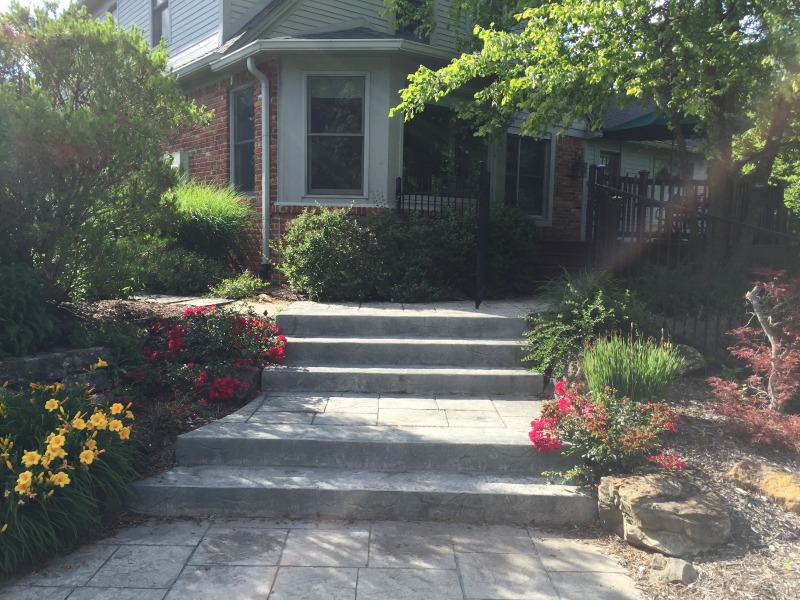
4) Man-Made Steps
While not technically stone, we wanted to mention man-made poured concrete steps because they can be created to mimic the look of stone through pattern and shape templates. Benefits of man-made steps include lighter weight and a wider variety of shapes, colors and styles. We do feel that they offer a more formal look to a landscape over natural stone, however.
A large part of a landscape design scheme is to provide clear, safe, and beautiful paths for people (and pets) to walk on. If you have a slope in your yard, we suggest talking with a landscaping professional to discover the best option for your situation. In the end, it comes down to what you like and works best for your needs. Please send us an email or give us a call at (317) 997-4803 with any questions or for help with your landscape design project.




